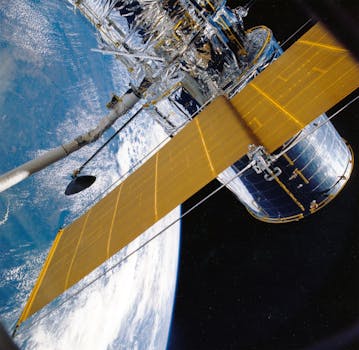LEO Satellites: Revolutionizing Global Connectivity with Low Earth Orbit Technology

LEO Satellites: Revolutionizing Global Connectivity with Low Earth Orbit Technology
LEO satellites, or Low Earth Orbit satellites, are a type of satellite that orbits the Earth at an altitude of approximately 160 to 2,000 kilometers. This relatively low orbit allows LEO satellites to provide low latency and high-speed connectivity, making them an attractive solution for various applications such as telecommunications, navigation, and Earth observation.
The use of LEO satellites is becoming increasingly popular due to their ability to provide global coverage and connectivity, even in remote and underserved areas. With the launch of constellations such as Starlink and OneWeb, LEO satellites are poised to revolutionize the way we communicate and access information globally. In this article, we will explore the benefits and applications of LEO satellites and how they are transforming various industries.
How LEO Satellites Work
LEO satellites work by transmitting and receiving data to and from Earth-based stations. They are equipped with transponders that receive signals from Earth-based stations and re-transmit them back to other parts of the globe. This allows for low latency and high-speed connectivity, making LEO satellites ideal for real-time applications such as video conferencing, online gaming, and live streaming.
LEO satellites are also equipped with advanced propulsion systems that allow them to maintain their orbit and adjust their position as needed. This ensures that the satellites remain in their designated orbit and continue to provide uninterrupted service.
Applications of LEO Satellites
LEO satellites have a wide range of applications across various industries. Some of the most significant applications of LEO satellites include:
Telecommunications: LEO satellites are being used to provide high-speed internet connectivity to remote and underserved areas. They are also being used to provide backup connectivity during natural disasters and outages.
Navigation: LEO satellites are being used to provide location-based services such as GPS and navigation. They are also being used to track assets and vehicles in real-time.
Earth Observation: LEO satellites are being used to monitor the Earth’s surface and atmosphere. They are being used to track climate change, monitor natural disasters, and detect early warning signs of droughts and famines.
Benefits of LEO Satellites
LEO satellites offer several benefits over traditional geostationary satellites. Some of the most significant benefits of LEO satellites include:
Low Latency: LEO satellites have a significantly lower latency than geostationary satellites, making them ideal for real-time applications.
High-Speed Connectivity: LEO satellites can provide high-speed connectivity, making them ideal for applications such as video conferencing and online gaming.
Global Coverage: LEO satellites can provide global coverage, even in remote and underserved areas.
Challenges and Limitations of LEO Satellites
While LEO satellites offer several benefits, they also have some challenges and limitations. Some of the most significant challenges and limitations of LEO satellites include:
Interference: LEO satellites can interfere with other satellites and systems, causing signal degradation and loss of service.
Orbit Maintenance: LEO satellites require regular orbit maintenance to ensure they remain in their designated orbit.
Cost: LEO satellites are relatively expensive to launch and maintain, making them less accessible to some organizations and individuals.
Conclusion
In conclusion, LEO satellites are revolutionizing global connectivity with their low latency and high-speed connectivity. They have a wide range of applications across various industries, including telecommunications, navigation, and Earth observation. While they have some challenges and limitations, the benefits of LEO satellites make them an attractive solution for organizations and individuals looking to provide global coverage and connectivity.

